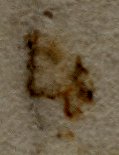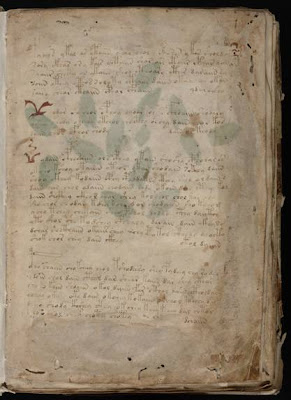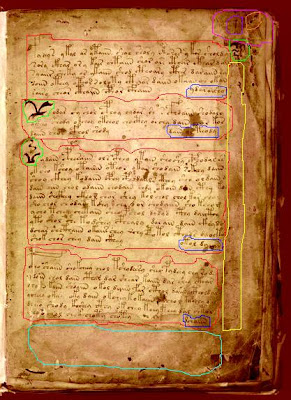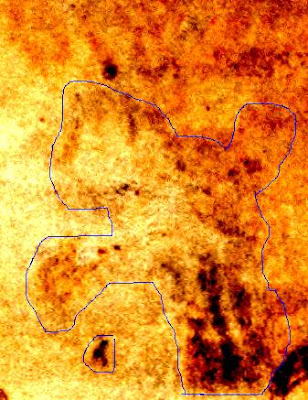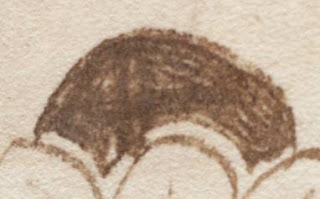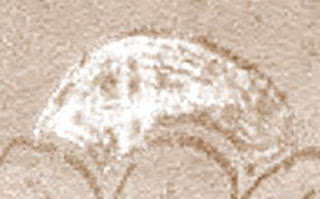For the recent Hungarian Voynich summer camp, I offered to do a couple of IM sessions over Skype, both of which seemed to go down very well. I thought many Cipher Mysteries readers might enjoy going over the transcript, so here it is (lightly edited for house style, as usual, and with after-the-event section dividers to make it not quite so unwieldy). I’ll be posting the Sagittarius spreadsheet mentioned here to the the blog very shortly, have no fear! 🙂
Note: Skype IM session on 27/08/2009
vc = “voynich camp”
NP = “Nick Pelling”
o. Introduction
[19:01:42] vc: Thank you very much for the possibility.
[19:01:57] NP: No problem – may I ask who is there this evening?
[19:02:41] vc: We are currently five pople but we are six and tomorrow we will be seven.
[19:02:50] NP: five is fine 🙂
[19:03:11] NP: Do you have names, or are you Devo?
[19:03:19] vc: Two linguists, and 3 geekz.
[19:03:46] NP: I’m not sure who would win the fight. Best to work together.
[19:03:57] vc: Zsolt, Ancsi, Norbi, Miklos, Anna, Andris.
[19:04:13] NP: OK, got it. Where shall I begin?
1. Page Reference Discussion
[19:04:49] vc: can you speak about your own theory about the seem to be page links?
[19:05:29] NP: OK – the apparent page references
[19:08:00] NP: Large medieval documents were bound into quires, and the quires were numbered
[19:08:16] NP: But for centuries, people used letters rather than numbers
[19:08:21] NP: a b c d e etc
[19:08:46] NP: folio numbers were then given in roman numerals for that quire
[19:08:50] NP: i ii iii iv v etc
[19:09:11] NP: The side of the page was also given, with r for recto, v for verso
[19:09:57] NP: So, for centuries people referred to page numbers pimarily in tiny little letter patterns of the form: air, aiv, aiir, aiiv, aiiir, aiiiv
[19:10:38] NP: Few people nowadays (apart from codicologists) bear this in mind, but this was the primary way in which books were structured circa 1400
[19:11:22] NP: So, if we were to look at the VMs through the eyes of someone living 500 years ago, the aiiv / aiir patterns would immediately jump out a t them as being page references.
[19:12:05] NP: Specifically, page references to the first bound quire of a book (for there is no bir biv biir biiv pattern in the VMs)
[19:12:30] NP: So, you might say, what if these are indeed page references to the first quire?
[19:13:09] NP: Well… if they are page references, they’re quite strange ones: references to recto (r) pages would then be vastly outnumbered by references to verso (v) pages
[19:13:51] NP: Ultimately, it comes down to a paradox of vision – we’re presented with something that *looks* like page numbers, but which does not have the statistical profile of page numbers. How can that be?
[19:14:26] vc: We are listening, go on
[19:14:36] NP: Once you start saying “well, these are only designed to resemble page numbers”, then you’re into the realms of cryptography and steganography
[19:15:36] NP: I think that the presence of these non-page-number page numbers is a persuasive reason to look for cryptographic solutions in preference to linguistic solutions
[19:15:43] NP: But then…
[19:16:13] NP: You have to ask the question, what are these non-page-number page numbers actually doing? What is their function?
[19:16:43] NP: When I went to the Beinecke in May 2006, I spent an hour looking at a single page of the VMs trying to work it out.
[19:16:58] NP: f38v
[19:17:32] NP: I had borrowed a magnifying glass from the front desk and went over every aiiv-style pattern on the page, over and over again, looking for a clue
[19:17:46] NP: And then I noticed it, one tiny piece at a time
[19:18:15] NP: And in the two years since, I’ve fleshed it out into a complete story of how they came about, and why they have the shape they do.
[19:19:20] NP: In the first phase, the author wrote a simple “v” shape and added a carefully placed dot above the row of i’s. This indicated one of the Arabic numerals 1-9 (I think)
[19:19:55] NP: However, after that early Herbal A phase, the author revisited it and thought it was too obvious, and so added scribal flourishes.
[19:20:20] NP: These loops start from the dot, go up and around, and rejoin the unflourished “v” shape at the top right
[19:20:54] NP: In the Currier B phase, the author used a completely different way of enciphering numbers (but using the same aiiiv family pattern)
[19:21:13] vc: Yes, we can see it in Psp
[19:21:26] NP: So, you can see the layers of development of the cipher over time. Voynichese wasn’t a static system, it was an evolving system
[19:22:13] NP: The problem with using statistical tools on Voynichese is that the system moves over time, which is why it is important to apply tests to each phase in turn
[19:22:21] vc: That’s why you are so eager about to reconstruct the original binding order…….
[19:22:32] NP: That’s one of the reasons, yes
[19:23:02] NP: Mainly it comes back to the evolution of the cipher, though. By tracking the evolution, we can perhaps find a way into it
[19:23:08] vc: because the question arises – why one can observe this on 38 v first?
[19:23:37] NP: I chose the page because it was clearly written and had plenty of aiiv patterns on to work with.
[19:23:54] NP: Some herbal pages are clear but don’t have much text
[19:24:50] NP: I suppose one of the cutting edge research things I’d like you all to come away with from this is the idea that the Voynich grew and developed
[19:25:13] vc: Is it observable on other pages? for example, on a page written by another Currier hand?
[19:25:14] NP: It was not a “fait accompli”, a huge static thing.
[19:25:24] NP: Only on Currier A pages
[19:25:31] NP: Hand 1 pages
[19:25:40] vc: Hmmm…
[19:25:58] NP: On Hand 2 pages, the “v” flourish is written in one go, but takes a number of shapes
[19:26:11] NP: I think that the Arabic numeral is enciphered using those shapes
[19:26:17] NP: Look for yourself
[19:26:41] NP: I should say: “the v and the scribal flourish are written together in one go”
2. The vertical column on f49v
[19:27:15] vc: Speakin’ bout arabic numerals, have you checked with your own eyes on the real thing F49v?
[19:27:20] NP: yes
[19:27:27] NP: not original
[19:27:31] vc: There are arabic numbers on the left margin.
[19:27:40] NP: Yes, 16th century Arabic numerals
[19:27:52] NP: Yet the quire numbers have 15th century Arabic numerals
[19:28:09] vc: It seems on the reproductions that they are about the same color and style as the Voynichese letters nearby
[19:28:10] NP: Doesn’t add up, unless the f49v letters were added later
[19:28:19] NP: They’re pretty close, but they’re not the same
[19:28:28] vc: 🙁
[19:28:44] NP: It fooled Brumbaugh – he erected a huge theory on that alone
[19:28:54] vc: Next Q from us:
[19:29:22] vc: Then how would you interpret these single character lists on the left of some pages?
[19:29:56] NP: (1) Page titles
[19:30:00] NP: (2) cipher keys
[19:30:02] NP: (3) both
[19:30:05] NP: (4) neither
[19:30:07] NP: 🙂
[19:30:10] vc: XD
[19:30:46] vc: …So you were able to turn the original pages with your bare hands?
[19:30:49] NP: Oh yes
[19:30:52] vc: Jeez…
[19:31:00] NP: They were clean
[19:31:01] NP: 🙂
[19:31:20] NP: Seriously, the Beinecke loves people to look at its books
[19:31:36] NP: But they do insist you take your tinfoil hat off at the door
[19:32:26] NP: Actually, I looked at the VMs for three whole days, which was extremely generous of them, and that was much appreciated
3. Steganography or cryptography?
[19:32:20] vc: Right. So: (we haven’t read your book…yet) Steganography or cryptography?
[19:32:30] NP: Both
[19:32:55] NP: It is a cipher that has been disguised as a language
[19:34:05] NP: One of the back-end ciphers (the verbose ciphers I blogged about earlier today) turns a dense, information-rich series of tokens and turns it into an information-sparse language-like entity
[19:34:21] NP: XYZ –> BABEBI
[19:34:33] NP: is a trivial example
[19:34:57] NP: where X –> BA, Y –> BE, Z –> BI
[19:35:38] vc: Right -we have just thinking about the same conception.
[19:35:44] NP: This gives the apparent CVCVCV behaviour that makes the VMs seem so language-like
[19:35:56] vc: Just to reveal some of our works —
[19:36:03] NP: ok…
[19:36:14] NP: http://ciphermysteries.com/2009/08/27/voynich-cipher-structure
[19:37:36] NP: And here’s a test I did in 2003, so I’m pretty consistent: http://voynichcentral.com/users/nickpelling/pairs.gif
[19:37:45] vc: We will definitely read your article later…
[19:38:41] NP: And here’s the article I couldn’t find earlier: http://ciphermysteries.com/2009/06/06/the-voynich-cipher-for-code-breakers
[19:41:27] vc: Ok, we have just made a quick look on them for some of us have’nt seen these before.
[19:41:49] NP: There’s lots of good stuff on my blog. Lots!
[19:42:06] vc: The author knows 🙂
[19:42:25] NP: I wouldn’t post it if it wasn’t good. 😉
[19:42:42] NP: You should see the stuff I don’t post! ;-o
[19:42:57] vc: We downloaded your whole blog and copied it to identical CD’s
4. Occitan sources?
[19:43:17] vc: Ok. Next q:
[19:43:36] vc: About the Occitan language.
[19:44:06] vc: Where does the info on the month names come from?
[19:44:30] NP: Jorge Stolfi asked a load of Occitan researchers back in 1997
[19:44:46] NP: There’s a page on it, it’s certainly in the 1997 vms-list archive
[19:45:29] NP: Here’s this week’s post on it: http://ciphermysteries.com/2009/08/22/jaume-deydiers-livre-de-raison
[19:45:36] vc: hmm…
[19:45:53] NP: Basically, the closest match was with Toulon Occitan
[19:46:05] NP: But with a bit of German thrown in (for “augst”)
[19:46:26] vc: (also: “may”)
[19:46:36] NP: But is it maij or may?
[19:47:41] NP: However, it’s very likely that the Toulon Occitan was merely one person (Jaume Deydier) so it’s a bit of a small sample to be doing inferences from
[19:48:17] NP: Unless anyone knows better, there aren’t that many written examples of pre-1600 Occitan to be found anywhere
[19:48:34] NP: And spelling was a bit of a fluid thing back then, too
[19:48:58] vc: yes, our lingusist here told us 🙂
[19:49:03] NP: I’ve just read a book on artisan autobiographies, and many artisans deliberately spelt things how they sounded
[19:49:22] NP: a kind of anti-academic independent spirit
5. Voynich Marginalia questions
[19:50:27] vc: Do you think that the marginalia and other features written with latin alphabet originate from more than one person?
[19:50:40] NP: Yes, but perhaps not in the way that you might think
[19:50:51] vc: ?
[19:51:03] NP: The problem with the marginalia is that they have Voynichese embedded in them
[19:51:18] vc: This is not a problem. 🙂
[19:51:36] NP: Well.. you’ll see why it might be…
[19:51:48] NP: If you look at f17r under an ultraviolet black lamp, there’s a piece of Voynichese tacked on the end
[19:52:04] NP: it reads: oteeeolair
[19:52:28] NP: Rene Zandbergen independently observed it earlier this year, so I didn’t just imagine it
[19:52:30] NP: 🙂
[19:52:48] vc: Do one usually have a portable ultraviolet black lamp when you go to the Beinecke? 🙂
[19:53:00] NP: Luckily they have one behind the desk you can borrow
[19:53:06] NP: I left mine in the car
[19:53:07] NP: 🙂
[19:53:36] NP: Similarly, there’s Voynichese embedded in the f116v marginalia
[19:53:48] vc: But that can be seen.
[19:54:02] vc: It would be really nice if they could be used as cribs
[19:54:23] NP: That’s what Newbold thought…
[19:54:37] NP: But why can’t we read the marginalia on f116v?
[19:54:47] vc: Yes… Why?
[19:55:10] NP: I think the answer is that successive owners have emended (altered incorrectly) the text, trying to rescue fading words
[19:55:52] NP: And so f17r, f66r, and f116v have all been rescued but worsened
[19:56:44] NP: Unfortunately, the Beinecke’s scans aren’t good enough for us to be able to do forensic uber-restoration on these
[19:56:56] NP: I’ve tried, though, believe me I’ve tried
[19:57:25] vc: We have consulted with a hungarian medieval scholer who suggested that text on the 116v is actually a prayer or something like that in the realm of magic
[19:57:31] vc: a rune
[19:57:38] NP: Well, a prayer is close
[19:57:46] NP: ahia maria
[19:57:51] NP: + + +
[19:57:57] vc: the characters like + as separators justifiy this theory.
[19:58:00] NP: yes
[19:58:35] NP: However, if you look at the “rescued” letters at the beginning of the same line, you can see the contrast with the faded “ahia maria” letters
[19:58:57] vc: He said that this is usual at medieval spells. At these places one might draw a cross in the air. how is it said in english?
[19:59:20] NP: the same, probably “trace a cross shape in the air”
[19:59:33] NP: “trace out a cross shape in the air” probably better
[19:59:49] vc: As Catholics still do
[20:00:16] NP: It could be a prayer, or a curse, or a spell (protection?) or anything
[20:00:52] NP: Remember that the boundaires between magic and liturgy in the 15th century was painfully thin – both were usually carried out by broadly the same people.
[20:01:17] NP: See Richard Kieckhefer’s book “Forbidden Rites”, recommended
[20:01:19] vc: (What is lighter than a witch? A stone perhaps? Or a duck?)
[20:02:00] NP: I’m getting that sinking feeling
[20:02:47] NP: necromancy, charm, spell, prayer – pretty fluid lines between them all
[20:02:58] vc: Whatever the main language of the spell, the last words seem to be in german. What is your opinion about this?
[20:03:31] NP: I think that this was probably added by the first obsessive Voynichologist (who just happened to be German)
[20:03:34] vc: (The duck comes from Monthy Python and the holy Grail…)
[20:03:39] NP: Georg Baresch
[20:03:44] NP: 🙂
[20:04:17] NP: I think it was probably Baresch who is responsible for most of the attempted rescuing of the marginalia
[20:04:32] vc: So you are saying that this last page is from at least 2 or 3 hands?
[20:04:39] NP: But it was Baresch who ensured that it got passed down to us, so we should be grateful to him
[20:05:03] NP: Yes, but on top of each other rather than side by side
[20:05:20] NP: Blow the page up and look again at the varying density of the ink and quills
[20:05:33] vc: We will certainly do that.
[20:06:34] NP: Also, put the various marginalia side by side to scale (all blown up), it’s an interesting viewpoint
[20:06:53] NP: Print them out at A1 scale – huge!
6. About the Hungarians…
[20:06:59] vc: We still have a lot of questions… do you still have some time?
[20:07:14] NP: I have about half an hour now
[20:07:50] vc: Great.
[20:07:51] NP: but I’d like to rest my fingers for five minutes – so, please, tell me what you each think of the VMs (one sentence each, please!)
[20:09:22] vc: (Miklos): Hi. I personally think that this is a kind of constructed language or maybe a written glossolalia.
[20:10:04] NP: it’s still 100x more rational than believing the moon landings were faked 🙂
[20:10:26] NP: even if it is wrong. 🙂
[20:12:57] vc: We are by the way started our searches on a few different pathes. One group is investigating the mythological context of the drawings with girls (if there’s any). The geekz are rather trying to draw some consequences using the digram and trigram entropies, and comparing our results with various 17th century documents, on different languages (and even as exotiic stuffs as Tamil and Hebrew)
[20:13:29] vc: On the other hand
[20:14:23] vc: we’d like to produce some “grammar” here, as well, so, we decided (similarly as Stolfi did it once) to look at the distributions of different words.
[20:14:26] NP: http://ciphermysteries.com/2009/06/18/q13-and-voynich-balneology-sources
[20:14:58] vc: If we concider the first words in the herbal the names of the plants, than maybe that could bring us somewhere.
[20:15:22] NP: There have been many grammars proposed over the years – though I would strongly caution you to treat Currier A and Currier B separately, as the language changed along the way
[20:15:56] vc: Also, we are comparing the Hungarian flora with the drawings, and meanwhile with other old herbals (e. g. ashmole codex). We also about to address a hungarian herbelist in this topic.
[20:16:22] vc: Sure, we’d like to treat the two couriers differently.
[20:16:29] NP: Have you seen the “De Aqua” Voynich theory that was posted to YouTube last month? Its German author has invested a lot of time trying to identify the plants depicted. http://ciphermysteries.com/2009/08/24/de-aqua-voynich-theory-on-youtube
[20:16:48] NP: Erm, don’t shoot the Currier 😉
[20:16:49] vc: Not yet, but we are most curious about it
[20:17:20] NP: If you can read German quickly, there’s plenty of interesting stuff (but a lot of filler too)
7. The f1r paragraph “titles”…
[20:18:13] vc: You can see on f1r that the text is separated to 3 paragraphs.
[20:18:54] vc: Each paragraph ends with some words flushed right.
[20:19:06] NP: Yes… and let’s not forget what John Grove called “titles”, short pieces of text appended to the bottom right of the paragraphs
[20:19:14] vc: is it possible that these are quotations?
[20:19:20] NP: could be anything, who knows?
[20:19:43] NP: As an aside, I should say that the word “possible” sets my teeth on edge
[20:19:50] vc: quotations and the name of the persons who said them
[20:19:58] NP: Probably not
[20:20:28] vc: Not matches with the age?
[20:20:28] NP: My prediction is that they are section titles
[20:21:09] NP: book 1 – agriculture
book 2 – astronomy
book 3 – water
[20:21:10] NP: etc
[20:21:24] vc: hmmmmm
[20:21:43] NP: I would also predict that they relate to the first phase of the VMs’ production
[20:22:20] NP: because the final object has many more sections
[20:22:27] NP: they’re also in A, not B
[20:22:44] NP: but you don’t have to believe me
[20:23:13] NP: I don’t have a gun to your heads
[20:23:28] NP: 🙂
8. Plaintezt language?
[20:23:29] vc: Personally what do you think abozt the plaintext language and the plaintext alphabet length?
[20:23:48] NP: Plaintext language: Italian.
[20:24:05] NP: Maybe German, but if pressed I’ll stick to Italian
[20:24:24] NP: Plaintext alphabet length: just normal, nothing fancy
[20:24:41] NP: I do, however, think that there is something quite special about the enciphering
[20:24:54] vc: namely?
[20:25:21] NP: I think that it was enciphered on wax tablets using a combination of shorthand (to compress it) and verbose cipher (to expand it), such that the overall size of the text matched the original
9. Copy or original?
[20:26:11] NP: I think that there is evidence that the original layout and manuscript features were duplicated, even though the text was enciphered – and so I think that each line of ciphertext corresponds to a line of plaintext
[20:26:23] NP: key evidence for this:-
[20:27:13] NP: (1) the fake vellum hole on f34r – this is a hole that was made in the vellum to copy a a hole that was present in the original copy
[20:27:58] vc: (VBI index of this very feature of your theory?)
[20:28:01] NP: (finding a page number for you…)
[20:28:09] vc: Sorry, could’n miss that one
[20:28:51] NP: (2) f112 has a space on the right hand side. I think that this was a vellum flaw in the original, which was faithfully copied as part of the enciphering
[20:29:35] NP: 10000 VBI points! Ding ding ding!
[20:30:12] NP: Look up close at the hole on f34 – it was rubbed through the vellum, but why?
[20:30:53] NP: Sergio Toresella suggested that the author rubbed through the vellum in some kind of sexual frenzy, but I think he may just have got that wrong
[20:30:55] NP: :O
[20:31:31] vc: VBI index of THIS one is not small.
[20:31:38] NP: Plenty of people have proposed that the VMs is some kind of copy – I just added in some other evidence to say what kind of a copy
[20:31:57] vc: Yes, We have the same opinion.
[20:32:15] vc: It can’t be done in one iteration.
[20:32:28] NP: Essentially, that it’s an enciphered copy but one retaining many aspects of the original layout
[20:33:12] NP: There are also a number of places (particularly in Q13 and the pharma section) where you can see two layers…
[20:33:36] vc: Checkin’…
[20:34:38] NP: f77v (the house at the top)
[20:34:57] NP: f79v (the woman in the pool)
[20:36:39] NP: f88v or the page next to it (curious two-layered spherical jar)
[20:37:13] NP: Sagittarius page – the top left nymph and her odd barrel
[20:37:22] vc: So how these two layers point to the original layout?
[20:37:33] NP: I also think f57v was written in two or more passes
[20:37:50] NP: It’s hard to tell what to think
[20:38:26] NP: What I *suspect* is that there is an odd game of expressing and hiding going on here
[20:39:06] NP: I don’t honestly think that most of the water nymphs have any function apart from distracting your eye from what is really going on on the page
[20:39:22] vc: Mhm
10. The Sagittarius spreadsheet…
[20:39:30] NP: The zodiac nymphs’ poses probably do encode some kind of information, though
[20:40:06] NP: I’m sure a page full of naked women was probably even more distracting to the eye 500 years ago
[20:40:23] NP: talking of which…
[20:40:31] NP: I have a spreadsheet you might like to see
[20:40:41] vc: Sure
[20:40:50] NP: It’s taken from the Sagittarius page of a 14th century manuscript
[20:41:15] NP: and it might just contain basically the same data that is enciphered on the VMs’ sagittarius page
[20:41:42] NP: would you all like to have a look?
[20:41:53] vc: YES
[20:42:06] vc: Take a Y! an E! an S!
[20:42:25] NP: I heard you the first time. 😉
[20:43:27] NP: I should mention that what you have here is an annotated version of a scan of a photocopy of an old b&w photograph that is copyrighted by the Warburg Institute
[20:43:57] NP: I added in the red lines to try to reconstruct the table.
[20:44:24] NP: Which means “please don’t post this on the internet or I’ll get busted”
[20:44:21] vc: Ok, we are seeing the reference. Now what?
[20:44:33] NP: Now, here’s the clever bit
[20:45:00] NP: What the table is encoding is an astrological table per degree.
[20:45:00] vc: ok… won’t post
[20:45:45] NP: That is, each of the 30 degrees has a specific planet, fortune, gender, unlucky day assigned to it
[20:45:58] vc: aham
[20:46:32] vc: so if i transform it into circles, I basically get something very similar semantically to the VMS astro circles?
[20:46:48] NP: Theoretically – the tricky bit is working out how that mapping works
[20:47:32] NP: What it needs is a bunch of clever people looking at it and throwing around ideas for a couple of days
[20:47:49] NP: Which I why I thought of you lot 🙂
[20:48:25] vc: I think we are getting your suggestion. 🙂
[20:48:58] vc: Psp: rectangular to polar
[20:49:20] vc: my very first idea
[20:49:21] NP: The other tables didn’t align half as well as Sagittarius, so it would introduce too much uncertainty into the range of maps to choose from
[20:49:24] vc: of course it’s just me
[20:49:33] vc: Ok, ok
[20:49:42] NP: I think… it might not be the answer
[20:49:52] NP: …but it’s a start 🙂
[20:50:20] NP: Sagittarius is interesting because all the nymphs are facing right
[20:51:02] NP: If there is stuff being encoded in poses / clothes / accessories… look for crossed legs, outstretched arms, arm behind hip
[20:51:15] NP: head-dresses, stars
[20:52:21] NP: Incidentally, I think most of the breasts on the page were added in the second phase.
[20:53:11] NP: However… it may be that the breasts from the first phase (I can barely believe that I’m typing this as a sentence) encoded some kind of information. So you might usefully look for breasts that weren’t added later. :O
[20:53:33] vc: (VBI)
[20:53:50] NP: Bearing in mind that the author seems to have a predilection for adding dots in the first phase and hiding them later
[20:53:55] NP: VBI 100000!
[20:53:59] NP: off the scale
[20:54:12] NP: But… look at it for yourself, and make up your own mind
[20:54:29] vc: ROTF
[20:54:52] NP: At least you have something to compare with the page that nobody else (apart from me) has seen in the last 550 years
[20:55:04] NP: Real data (even if does have drawn on breasts)
11. Finishing up…
[20:55:41] NP: OK, team Voynich Budapest
[20:55:50] NP: I have to go now
[20:56:03] NP: I hope you’ve all broadened your view of the VMs
[20:56:12] NP: And not been exposed to too much VBI
[20:56:22] NP: 🙂
[20:56:23] vc: Thank You very much indeed for the most fruitful conversation.
[20:56:36] vc: Not enough i must say
[20:56:46] NP: Plan A is to return for a second session on Sunday
[20:56:55] NP: Is that correct?
[20:57:11] vc: Yes
[21:01:06] NP: Right – good luck, everyone & talk with you on Sunday!
[21:02:02] vc: Ok, all the best until then
[21:02:06] NP: byeeeeeee
[21:02:13] vc: bye 🙂



